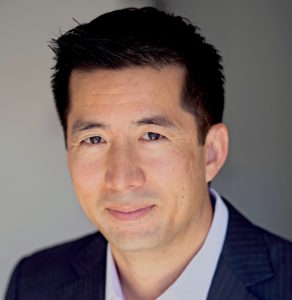“Why can’t I stop thinking about hurting my newborn baby?”: Understanding Postpartum/Perinatal OCD – Part 3 of a 5 article series on Harm OCD

Postpartum depression is a phenomenon that may be familiar to many, even those who do not have children of their own. However, much less widely known or discussed is the anguish of Anxiety or OCD in the Perinatal and Postpartum stages, which affects an estimated 1-3% of child-birthing women. The onset of these symptoms is often quite sudden, and can create significant emotional distress on at what already can be a very challenging period.
Imagine Laura, a newly minted mother…
 Photo credit: Kevin Liang
Photo credit: Kevin Liang
She’s sleep deprived.
She’s recovering from the physical hardships of pregnancy and birth.
She’s adjusting to the idea of having a fully dependent, innocent human being to care for, and wants desperately to bond with her precious baby.
She’s nervous about nursing, added financial responsibility and possibly other medical complications…
…and all the while, she is tortured by thoughts that she could drown the baby while giving it a bath.
Laura thinks repeatedly to herself, “Why am I having these horrible thoughts?! Of course, I would never do anything like that…but I can’t get the image out of my mind…does that mean I might actually do it?…”
This leads to doubts about herself and her confidence in her own mental stability.
“What kind of monster must I be to have these thoughts about this beautiful baby that I conceived, carried in my womb, and birthed? Maybe I’m mentally unfit to be a parent…”
Laura fears further about what could happen if anyone found out she was having these thoughts.
“I better not tell anyone – people will think I’m crazy! The doctors will lock me up in a psychiatric unit, or separate me from my baby! Or even worse, Child Protective Services will say that I’m unfit to be this child’s parent!…”
It is heartbreaking to think that Laura, and so many others like her, could be dealing with these horrible thoughts at what otherwise could be such a precious time bonding with a new life in the world. Yet, OCD can prey upon times of transition, uncertainty, and vulnerability, and the post-partum period is definitely all of those things.
Symptoms of any kind of OCD can feature in the perinatal or postpartum periods, though intrusive thoughts of harm to one’s newborn infant – accidental or intentional – are most common. Postpartum OCD can last into later stages of infancy and childhood if not addressed.
Common unwanted and intrusive postpartum obsessions include:
- Harming the baby (dropping baby from a high place, shaking the baby, stabbing, drowning)
- The idea that the baby could die in her sleep
- The image of the baby dead
- Thoughts of the baby choking or suffocating, and being unable to save the baby
- Ruminating worries that the baby will be harmed due to one’s own negligence (insufficient cleaning, not thoroughly secured seatbelts or locks, etc.)
Common compulsions or avoidance behaviors with Postpartum OCD include:
- Repeatedly checking on the baby to see if it is breathing, or has a pulse
- Excessive washing or bathing for fear of exposing the baby to germs/allergens (an overlap with Contamination OCD)
- Repeating specific prayers or religious practices
- Avoiding certain activities with the baby (e.g., bathing, using stairs, holding, diaper changing)
- Avoiding being alone with baby, or wanting one’s partner or a helper nearby at all times
Parents who are dealing with Postpartum OCD should know that this is a treatable issue (see part 4), and that these distressing thoughts, when accurately diagnosed, are NOT representative of a real threat to one’s newborn children, nor any real reflection of one’s character or fitness for parenthood. Postpartum OCD is merely a mental and behavioral trap that parents can get stuck in postnatally. In some cases it may be an expression of a prior history of anxiety. In other cases, it may seem totally out of the blue.
Even though this article is meant to highlight Postpartum OCD, one can imagine that Postpartum Depression can certainly result from struggling with these thoughts and behaviors as well. Even without the endless loop of OCD, adjusting to life with a little one is a time when there are so many other big transitions and challenges occurring. The stress on one’s sleep, health, finances, and relationship can be enough to trigger depression.
Some good news is that…
…as is the case for all types of OCD, thoughts are merely thoughts. They frequently are random, weird, bizarre, and completely illogical – and certainly don’t always represent any significant reality. In fact, some studies have shown that four in five new mothers report unwanted and unpleasant thoughts similar to those experienced by mothers with Postpartum OCD. However, most new parents let those thoughts pass by as random gibberish, allowing them to steer clear of the trap of compulsions, rituals, or other avoidance behaviors aiming to eliminate those thoughts.
Parents with postpartum OCD can get themselves to the same place by purposefully and systematically confronting their fears, via Exposure with Response Prevention. This includes recommended exercises to target one’s specific fears and compulsive ways of avoiding anxiety, which is ultimately much more powerful than simply trying to “reason” with one’s obsessions.
Examples of Exposure/Response prevention exercises that may be helpful
- Purposely imagine harm happening to one’s baby to the point that the images start to seem ridiculous
- Spend increasing amounts of time alone with baby
- Reduce and eventually refrain from any repetitive prayers/thoughts/phrases or actions aimed at ensuring the baby’s safety
For more information about different types of Harm OCD and the process of treatment in therapy, continue reading on in our five part series:
Part 1 is a general description of the Harm OCD subtype.
Part 2 focuses on Pedophilic OCD.
Part 4 discusses effective treatment for Harm OCD.
Part 5 highlights the unique concerns that Harm OCD sufferers should be aware of.

Martin Hsia, Psy.D. is the Clinical Director of CBT SoCal, and specializes in helping people with OCD, Anxiety, and Insomnia in Glendale, CA.
